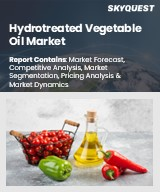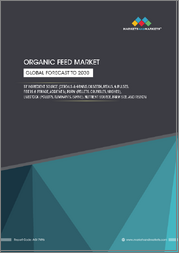
|
시장보고서
상품코드
1627803
세계의 종자 시장 : 예측(2025-2030년)Global Seed Market - Forecasts from 2025 to 2030 |
||||||
세계의 종자 시장은 CAGR 6.20%로 성장할 것으로 추정되고, 시장 규모는 2025년 815억 5,700만 달러에서 2030년에는 1,101억 9,300만 달러에 이를 것으로 예상됩니다.
종자는 배아 단계에서 식물의 영양소를 축적하며 세계 인구가 증가함에 따라 음식 수요는 증가의 길을 따릅니다. 유전자 변형 종자와 전통적인 종자는 식물이되기 위해 필요한 수분 섭취량과 다른 요소가 다르지만 환경에 대한 관심이 높아짐에 따라 수요가 긍정적으로 성장할 것으로 예상됩니다.
예를 들어 BASF는 2023년 2월 ToBRFV에 내성이 있는 토마토의 새로운 품종을 발표했습니다. 이 회사의 Nunhems(R) 포트폴리오에는 현재 ToBRFV에 내성을 나타내는 토마토 종자 품종의 선택이 포함되어 있습니다. 마찬가지로 2024년 3월, Syngenta Vegetable Seeds는 인도 하이데라바드에 새로운 시드 헬스 랩을 개설했습니다. 이 실험실은 인도 최초의 종자 위생 전문 실험실입니다. 이 실험실은 인도뿐만 아니라 아시아태평양 및 심지어 다른 지역의 생산자에게도 서비스를 제공합니다.
세계의 종자 시장 성장 촉진요인
- 원예 재배의 확대가 시장 성장을 가속할 전망
원예는 과일, 야채, 관상용 식물을 포함한 유전자 조작 작물의 재배를 정의하며 하이브리드 작물 품종을 개발하기 위한 새로운 기술 옵션을 채택하는 프레임 워크를 제공합니다. 따라서 주요 국가는 하이브리드 작물 생산의 성장 가능성을 최적화하기 위해 노력하고 있으며 원예 생산을 강화하기 위해 수직 농업 및 실내 농업 프로그램에 대한 투자가 실시되고 있습니다.
예를 들어, 농업 및 농민 복지성의 2023년부터 2024년 제2차 사전 예측에 의하면, 인도의 원예 생산량은 3억 5,223만 톤에 달하고, 과일, 향수 및 약용 식물, 허니 플라워, 향신료, 플랜테이션 작물이 적극적인 확대를 보이고 있습니다. 마찬가지로 유럽에서는 감자와 같은 주요 원예 작물의 생산을 강화하기 위해 다양한 계획이 시행되고 있으며, 이는 또한 시장 확대에 탄력을 줍니다.
세계 종자 시장의 지리적 전망
- 예측 기간 동안 북미는 시장에서 큰 점유율을 차지할 것으로 예상됩니다.
지역적으로 세계의 종자 시장은 북미, 남미, 유럽, 중동, 아프리카, 아시아태평양으로 구분됩니다.
예측 기간 동안 북미는 시장에서 큰 점유율을 차지하고 있지만, 이는 미국과 캐나다라는 주요 지역 경제에서 작물 생산의 강화로 인한 것입니다. 예를 들어 미국 농무부(USDA)에 따르면 2021년에서 2022년까지 밀 생산량은 4,480만 톤으로, 2022년에서 2023년에는 4,490만 톤으로 증가했습니다. 마찬가지로 2021년 미국 옥수수 생산량은 150억 부셸로, 2023년에는 153억 부셸로 증가했습니다.
게다가 미국에서는 종자 생산이 중시되고, 다양한 연구협력이 이루어지게 된 것도 이 지역 시장을 형성하고 있습니다. 예를 들어 Syngenta는 2023년 8월 미국 일리노이에 Syngenta Seeds R&D Innovation Center로 알려진 연구개발용 최신 32,000평방피트 연구소를 개설했습니다.
이 보고서를 구입하는 이유
- 인사이트 있는 분석 : 주요 지역뿐만 아니라 신흥 지역도 다루며 고객 부문, 정부 정책 및 사회 경제 요인, 소비자 선호, 산업별 및 기타 하위 부문에 중점을 둔 상세한 시장 고려 사항을 얻을 수 있습니다.
- 경쟁 구도 : 세계 주요 기업이 채택한 전략적 전략을 이해하고 적절한 전략으로 시장 침투 가능성을 이해할 수 있습니다.
- 시장 동향 및 촉진요인 : 동적 요인과 매우 중요한 시장 동향, 그리고 그들이 향후 시장 전개를 어떻게 형성해 나가는지를 탐구합니다.
- 실행 가능한 제안 : 역동적인 환경에서 새로운 비즈니스 스트림과 수익을 발굴하기 위한 전략적 결정을 내리기 위해 인사이트를 활용합니다.
- 폭넓은 이용자에 대응 : 신흥기업, 연구기관, 컨설턴트, 중소기업, 대기업에 유익하고 비용 효율적입니다.
어떤 용도로 사용됩니까?
업계 및 시장 인사이트, 사업 기회 평가, 제품 수요 예측, 시장 진출 전략, 지리적 확대, 설비 투자 결정, 규제 프레임워크 및 영향, 신제품 개척, 경쟁의 영향
조사 범위
- 실적 데이터 및 예측(2022-2030년)
- 성장 기회, 과제, 공급망 전망, 규제 틀, 고객 행동, 동향 분석
- 경쟁 포지셔닝, 전략, 시장 점유율 분석
- 수익 성장 및 예측 각국을 포함한 부문 및 지역 분석
- 기업 프로파일링(전략, 제품, 재무 상황, 주요 발전 등)
세계의 종자 시장은 다음 부문으로 분석됩니다.
유래별
- 유전자 변형
- 기존
특성별
- 제초제 내성
- 살충제 내성
- 스택 형질
작물 유형별
- 과일 및 야채
- 지방종자 및 콩류
- 곡물 및 곡류
지역별
- 북미
- 미국
- 캐나다
- 멕시코
- 남미
- 브라질
- 아르헨티나
- 기타
- 유럽
- 영국
- 독일
- 프랑스
- 기타
- 중동 및 아프리카
- 사우디아라비아
- UAE
- 이스라엘
- 기타
- 아시아태평양
- 일본
- 중국
- 인도
- 호주
- 기타
목차
제1장 서론
- 시장 개요
- 시장의 정의
- 조사 범위
- 시장 세분화
- 통화
- 전제조건
- 기준연도 및 예측연도의 타임라인
- 이해 관계자의 주요 이점
제2장 조사 방법
- 조사 디자인
- 조사 과정
제3장 주요 요약
- 주요 조사 결과
- CXO의 시점
제4장 시장 역학
- 시장 성장 촉진요인
- 시장 성장 억제요인
- Porter's Five Forces 분석
- 업계 밸류체인 분석
- 애널리스트 보기
제5장 세계의 종자 시장 : 유래별
- 서문
- 유전자 변형
- 기존
제6장 세계의 종자 시장 : 특성별
- 서문
- 제초제 내성
- 살충제 내성
- 스택 특성
제7장 세계의 종자 시장 : 작물별
- 소개
- 과일 및 야채
- 지방종자 및 콩류
- 곡물 및 곡류
제8장 세계의 종자 시장 : 지역별
- 소개
- 북미
- 유래별
- 특성별
- 작물별
- 국가별
- 남미
- 유래별
- 특성별
- 작물별
- 국가별
- 유럽
- 유래별
- 특성별
- 작물별
- 국가별
- 중동 및 아프리카
- 유래별
- 특성별
- 작물별
- 국가별
- 아시아태평양
- 유래별
- 특성별
- 작물별
- 국가별
제9장 경쟁 환경 및 분석
- 주요 기업 및 전략 분석
- 시장 점유율 분석
- 합병, 인수, 합의 및 콜라보레이션
- 경쟁 대시보드
제10장 기업 프로파일
- ADM Monsanto Company
- Dowdupont Inc.
- Groupe Limagrain
- Bayer Ag
- Kws Saat Se
- Chemchina(Sinochem Holdings Corporation Ltd.)
- Land O'lakes, Inc.
- Sakata Seed Corporation(Sakata Group)
- Takii & Co., Ltd.
- Dlf
- Basf Corporation
- Cargill Corporation
- Ball Horticultural Company
- Syngenta
- Limagrain(the Limagrain Cooperative)
- Growmark, Inc.
- CHS Inc.
- United Cooperative
- Beck's Hybrids
- Heartland Co-op
- Hazera Seeds(the Limagrain Group)
- Rijk Zwaan
The global seed market is expected to grow at a CAGR of 6.20%, reaching a market size of US$110.193 billion in 2030 from US$81.557 billion in 2025.
Seeds store the nutrients of a plant during the embryonic stage and with the growing global population, the food demand is on the constant rise thereby bolstering the need for more food production. Genetically engineered or conventional seeds differ on the basis of water intake and other ex-factors required for them to turn into plants, but with the growing environmental concern, their demand is anticipated to positive growth.
Several companies have launched disease-resistant seeds, for example, on February 2023, BASF introduced new tomato seed varieties that are resistant to ToBRFV. Their Nunhems(R) portfolio currently includes a selection of tomato seed varieties that exhibit resistance to ToBRFV. Likewise, In March 2024, Syngenta Vegetable Seeds opened a new Seed Health Lab in Hyderabad, India, showcasing the company's ongoing commitment to enhancing quality control capabilities. This lab is India's first specialized seed health lab. It will cater to growers not only in India but also across the Asia Pacific region and beyond.
Global Seed Market Drivers
- Growing horticulture practices is expected to improve the market growth
Horticulture defines the growing of genetically engineered crops inclusive of fruits, vegetables, and ornamental plants which has provided a framework for the adoption of new technological options for developing hybrid crop varieties. Hence major economies are aiming to optimize the growing potential of hybrid crop production, therefore investments in vertical farming and indoor farming programs are being implemented to bolster horticulture production.
For instance, according to the Department of Agriculture and Farmers Welfare's second advanced estimate for 2023-2024, India's horticulture production reached 352.23 million tons with fruits, aromatic & medicinal plants, honey flowers, spices and plantation crops showing positive expansion. Likewise, the European region undertaking various schemes to bolster the production of major horticulture crops such as potatoes which is also creating a surge in the market expansion.
Global Seed Market Geographical Outlook
- North America is expected to account for a significant share of the market during the forecast period.
Geographically, the global seed market has been segmented into North America, South America, Europe, the Middle East, Africa, and the Asia Pacific.
During the forecast period, North America will be holding a considerable share of the market which is attributable to the bolstering of crop production in major regional economies namely the United States and Canada. For instance, according to the United States Department of Agriculture (USDA), wheat production in 2021-22 was 44.8 million metric tons, which increased to 44.9 million metric tons in 2022-23. Likewise, in 2021, corn production in the United States was 15.0 billion bushels, which increased to 15.3 billion bushels in 2023.
Moreover, the growing emphasis on seed production in the United States has led to various research collaborations which are also shaping the regional market. Major companies are extending their product to improve their market presence in North America, for instance, in August 2023, Syngenta launched a new state-of-the-art 32,000 square feet laboratory space for research and development known as Syngenta Seeds R&D Innovation Center, in Illinois, United States
Reasons for buying this report:-
- Insightful Analysis: Gain detailed market insights covering major as well as emerging geographical regions, focusing on customer segments, government policies and socio-economic factors, consumer preferences, industry verticals, other sub- segments.
- Competitive Landscape: Understand the strategic maneuvers employed by key players globally to understand possible market penetration with the correct strategy.
- Market Drivers & Future Trends: Explore the dynamic factors and pivotal market trends and how they will shape up future market developments.
- Actionable Recommendations: Utilize the insights to exercise strategic decision to uncover new business streams and revenues in a dynamic environment.
- Caters to a Wide Audience: Beneficial and cost-effective for startups, research institutions, consultants, SMEs, and large enterprises.
What do businesses use our reports for?
Industry and Market Insights, Opportunity Assessment, Product Demand Forecasting, Market Entry Strategy, Geographical Expansion, Capital Investment Decisions, Regulatory Framework & Implications, New Product Development, Competitive Intelligence
Report Coverage:
- Historical data & forecasts from 2022 to 2030
- Growth Opportunities, Challenges, Supply Chain Outlook, Regulatory Framework, Customer Behaviour, and Trend Analysis
- Competitive Positioning, Strategies, and Market Share Analysis
- Revenue Growth and Forecast Assessment of segments and regions including countries
- Company Profiling (Strategies, Products, Financial Information, and Key Developments among others)
Global Seed Market is analyzed into the following segments:
By Origin
- Genetically Modified
- Conventional
By Trait
- Herbicide-Tolerant
- Insecticide-Resistance
- Stacked Trait
By Crop Type
- Fruits and Vegetables
- Oilseed and Pulses
- Cereals and Grains
By Geography
- North America
- USA
- Canada
- Mexico
- South America
- Brazil
- Argentina
- Others
- Europe
- United Kingdom
- Germany
- France
- Others
- Middle East and Africa
- Saudi Arabia
- UAE
- Israel
- Others
- Asia Pacific
- Japan
- China
- India
- Australia
- Others
TABLE OF CONTENTS
1. INTRODUCTION
- 1.1. Market Overview
- 1.2. Market Definition
- 1.3. Scope of the Study
- 1.4. Market Segmentation
- 1.5. Currency
- 1.6. Assumptions
- 1.7. Base and Forecast Years Timeline
- 1.8. Key Benefits to the Stakeholder
2. RESEARCH METHODOLOGY
- 2.1. Research Design
- 2.2. Research Processes
3. EXECUTIVE SUMMARY
- 3.1. Key Findings
- 3.2. CXO Perspective
4. MARKET DYNAMICS
- 4.1. Market Drivers
- 4.2. Market Restraints
- 4.3. Porter's Five Forces Analysis
- 4.3.1. Bargaining Power of Suppliers
- 4.3.2. Bargaining Power of Buyers
- 4.3.3. Threat of New Entrants
- 4.3.4. Threat of Substitutes
- 4.3.5. Competitive Rivalry in the Industry
- 4.4. Industry Value Chain Analysis
- 4.5. Analyst View
5. GLOBAL SEED MARKET BY ORIGIN
- 5.1. Introduction
- 5.2. Genetically Modified
- 5.3. Conventional
6. GLOBAL SEED MARKET BY TRAIT
- 6.1. Introduction
- 6.2. Herbicide-Tolerant
- 6.3. Insecticide-Resistance
- 6.4. Stacked-Trait
7. GLOBAL SEED MARKET BY CROPS
- 7.1. Introduction
- 7.2. Fruits and Vegetables
- 7.3. Oilseed and Pulses
- 7.4. Cereals and Grains
8. GLOBAL SEED MARKET BY GEOGRAPHY
- 8.1. Introduction
- 8.2. North America
- 8.2.1. By Origin
- 8.2.2. By Trait
- 8.2.3. By Crops
- 8.2.4. By Country
- 8.2.4.1. USA
- 8.2.4.2. Canada
- 8.2.4.3. Mexico
- 8.3. South America
- 8.3.1. By Origin
- 8.3.2. By Trait
- 8.3.3. By Crops
- 8.3.4. By Country
- 8.3.4.1. Brazil
- 8.3.4.2. Argentina
- 8.3.4.3. Others
- 8.4. Europe
- 8.4.1. By Origin
- 8.4.2. By Trait
- 8.4.3. By Crops
- 8.4.4. By Country
- 8.4.4.1. United Kingdom
- 8.4.4.2. Germany
- 8.4.4.3. France
- 8.4.4.4. Others
- 8.5. Middle East and Africa
- 8.5.1. By Origin
- 8.5.2. By Trait
- 8.5.3. By Crops
- 8.5.4. By Country
- 8.5.4.1. Saudi Arabia
- 8.5.4.2. UAE
- 8.5.4.3. Israel
- 8.5.4.4. Others
- 8.6. Asia Pacific
- 8.6.1. By Origin
- 8.6.2. By Trait
- 8.6.3. By Crops
- 8.6.4. By Country
- 8.6.4.1. Japan
- 8.6.4.2. China
- 8.6.4.3. India
- 8.6.4.4. Australia
- 8.6.4.5. Others
9. COMPETITIVE ENVIRONMENT AND ANALYSIS
- 9.1. Major Players and Strategy Analysis
- 9.2. Market Share Analysis
- 9.3. Mergers, Acquisitions, Agreements, and Collaborations
- 9.4. Competitive Dashboard
10. COMPANY PROFILES
- 10.1. ADM Monsanto Company
- 10.2. Dowdupont Inc.
- 10.3. Groupe Limagrain
- 10.4. Bayer Ag
- 10.5. Kws Saat Se
- 10.6. Chemchina( (Sinochem Holdings Corporation Ltd.)
- 10.7. Land O'lakes, Inc.
- 10.8. Sakata Seed Corporation (Sakata Group)
- 10.9. Takii & Co., Ltd.
- 10.10. Dlf
- 10.11. Basf Corporation
- 10.12. Cargill Corporation
- 10.13. Ball Horticultural Company
- 10.14. Syngenta
- 10.15. Limagrain (the Limagrain Cooperative)
- 10.16. Growmark, Inc.
- 10.17. CHS Inc.
- 10.18. United Cooperative
- 10.19. Beck's Hybrids
- 10.20. Heartland Co-op
- 10.21. Hazera Seeds (the Limagrain Group)
- 10.22. Rijk Zwaan



















